While electric motorcycles are still few and far between, there’s consensus in the industry that they will become ever more important. For years we’ve been told that they’re coming, but it’s been a faltering start so far. Aside from a couple of notable success stories, it’s often easier to pick out the failures than those that are proving the potential of the electric bike market.
American firm Zero, founded in 2006, is probably the biggest success story. Its range of all-electric roadbikes is ever-growing and ever-improving, with performance and range coming on in leaps and bounds. Some of its latest bikes will manage more than 190km at highway speed and over 300km in city conditions. With up to 52kW and 146Nm depending on the model, their performance is far better than you might imagine, too.
But they’re still expensive. We’re talking high-end superbike money for the faster, longer-range Zeros. And that means it’s hard to make a logical decision, based on fuel costs, to justify an electric Zero over a conventional bike. No, you have to really want one, to be an early adopter and to get the different experience of electric power.
In itself, that’s not an insurmountable issue, and Zero’s persistence proves it. Motorcycles are rarely a heartless, logical purchase, and want will usually trump need when it comes to buying decisions.
A couple of years ago, many expected 2016 to be something of a breakthrough time for electric bikes. Zero’s most enduring rival, Brammo, had been bought by powersports giant Polaris in 2015 and was being rolled into the Victory brand, putting electric motorcycles under the umbrella of a relatively mainstream manufacturer for the first time. Back in 2014 and 2015 Harley had been touting its impressive Livewire prototypes – more than a handful were made and tested – and other firms were also showing plenty of interest. Yamaha’s mid-term plan at the time claimed it would have an electric bike derived from the PES and PED concepts in production in 2017. Similarly, Honda’s 2015 annual sustainability report included plans to have electric bikes in the Chinese and Japanese markets in 2017.
Now, much of that positivity appears to have dissipated. Harley has retreated to its familiar cruiser roots, and while it had suggested it would have an electric bike on sale by around 2020, it’s not clear whether the firm still plans to stick to that schedule. Polaris has closed its Victory brand altogether, leaving its electric bikes in limbo.
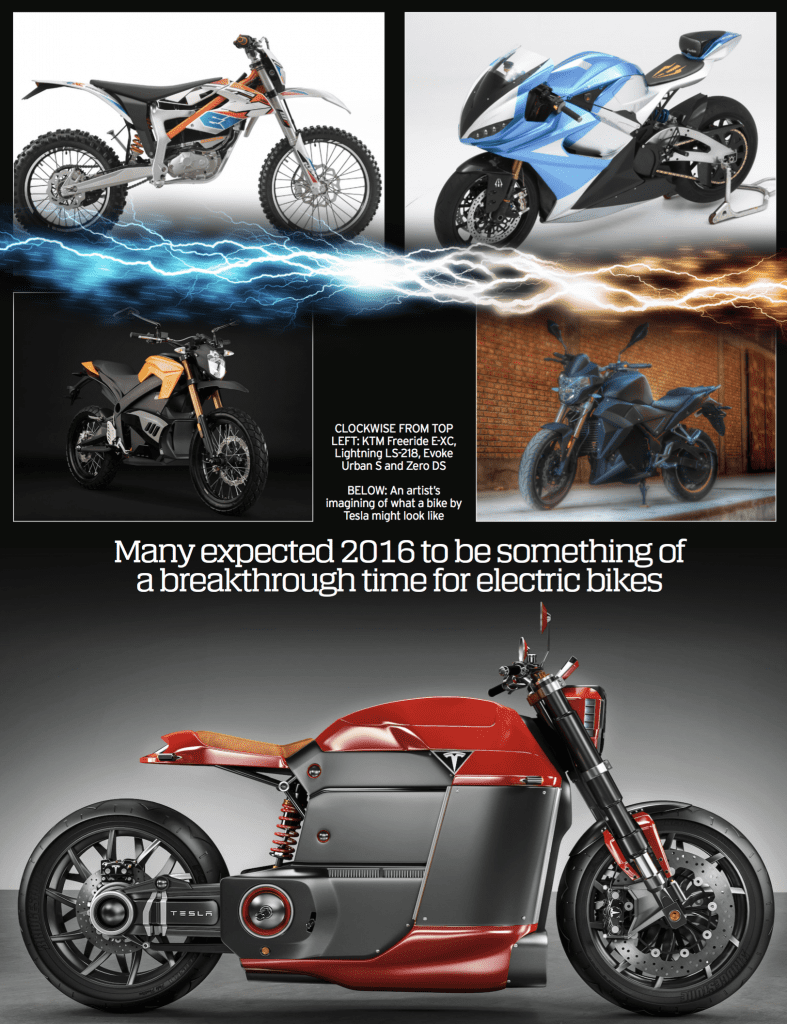
Of the other manufacturers, BMW has shown plenty of interest in electric bikes and currently offers its C Evolution electric scooter. However, given its very high price (it’s on a par with the S1000RR in most markets) it’s not surprising that sales have been fairly slow. KTM, another pioneer with its Freeride E models, has also suffered slow sales due to high prices; some dealers in the UK still have 2015-spec Freeride E-SX models in stock with prices slashed to little more than half their original tag.
Meanwhile, other electric start-ups that looked promising initially have also struggled. Mission Motors, which made an impressive electric superbike prototype, closed its doors in 2015. Lightning, which set speed records at 350km/h with its prototype and won the Pikes Peak International Hill Climb outright in 2013, officially offers the LS-218 superbike for sale. But the website says the company is still ‘accepting reservations’ for it’s A$50,000 machine – just as it has been since 2014, with little sign that there’s really much production going on.
Of the mainstream Japanese firms, there’s still no sign of a production version of the Yamaha PES or PED electric concepts, even though in 2015 the firm’s plan was to have something available in two years. Honda has also shown plenty of concepts and prototypes but we’ve yet to see a serious step into the electric market. Kawasaki, while quiet on the concept front, has probably filed more electric bike patents than its rivals, suggesting it might actually be at the forefront of the field as and when it finally makes the decision to put them into production.
But all these Japanese companies are in a holding pattern. They’re waiting for a tipping point; the moment that the sums add up and electric motorcycles become viable profit makers.
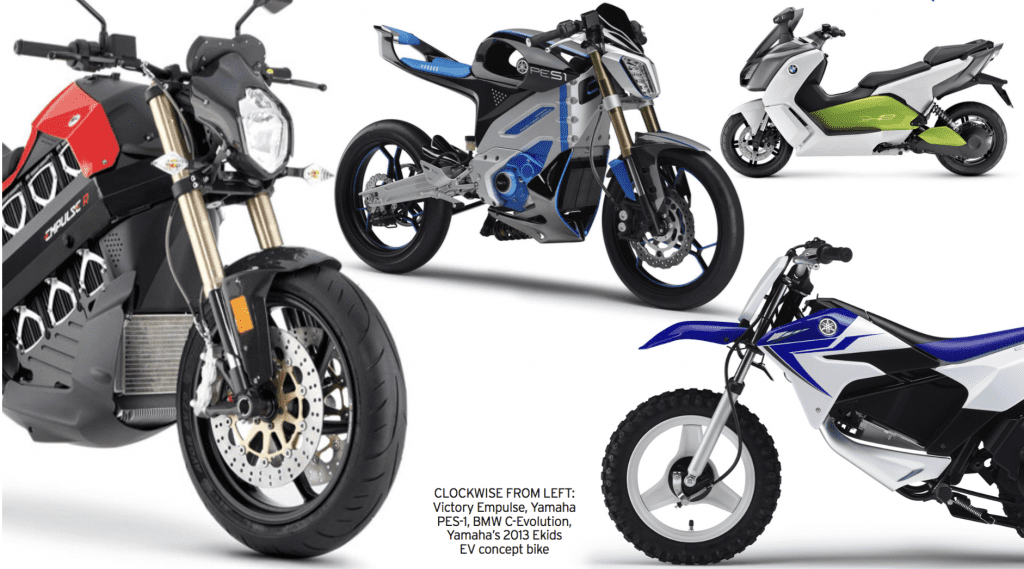
When that time comes, you can be sure they’ll be quick to respond. Honda’s thinly-veiled involvement in the Mugen TT Zero race bike project – Mugen was founded by Hirotoshi Honda, Soichiro’s son, and has always been very close to Honda itself, even if there’s no official tie-in – suggests that the company has got the technology to make a competitive electric bike at the drop of a hat. No doubt Yamaha, Suzuki and Kawasaki’s R&D departments have also been working hard. But it seems that none of them wants to be the first to move to production.
Does all this mean that the electric revolution we were promised isn’t going to come?
No. In the long term it’s still just as probable as ever that battery-powered bikes will make up an ever-larger proportion of the market. It’s just not happening quite as fast, or as obviously, as some expected.
It’s very hard to get a comprehensive idea of the size of the electric bike market globally. Individual countries count registrations differently and many don’t hand out figures for electric bike sales. From those that do, the picture is that the electric bike market is still very small, but it is growing.
In France, for instance, 2016’s sales figures show that electric bike registrations were up 46 per cent. That’s impressive, but the bare figures still show that only a total of 814 were sold in the whole year, in a bike market of more than 150,000 annual sales. BMW’s C Evolution took the lion’s share, with 503 sales, while Zero added another 104.
Not every country is as enthusiastic, though. The most up-to-date figures available show a mere 18 C Evolutions were sold in the UK in 2015, and in the first three-quarters of 2016 the equivalent number was just 11. Similarly, only 15 KTM Freeride Es were registered for the road in the UK in 2015, and none in 2016. Zero hasn’t sold its bikes in the UK for years, although the company has just made a return there.
With those numbers in mind, it’s easy to see why the mainstream bike makers are still sticking to petrol power.
When the electric revolution comes, the chances are that established markets like Europe won’t be where it starts. Instead China looks like it will be the starting point.
Although figures are hard to come by, there are dozens, maybe even hundreds, of companies in China making electric scooters already. Low on quality, low on performance and low on range, they’re also low on price, and as such make for near-disposable city transport.

Now, though, there’s a growing number of more convincing electric bikes emerging from China, perhaps as a result of electric power being more readily accepted over there. Among them are Evoke, which offers its sole model the Urban S, for the equivalent of A$8500 in China and has plans to export to America and elsewhere. The Urban S looks a lot like a real motorcycle, manages a 130km/h top speed and has 19kW. Range is 200km in city traffic or 120km at highway speed. That puts it close to the cheapest of Zero’s offerings, but at around half the price.
In September this year the firm plans to reveal another model, the Kruzer, with styling along the lines of the Ducati Diavel, just electrically powered. It’s claiming 30kW peak power and a 230km+ range, with an aluminium frame and a two-hour charge time.
Later this year we’ll also see the new Sur-Ron electric bike from China. We revealed patent images of this machine already (Vol 66 No 16), and it again appears to be targeting the likes of Zero.
Nobody doubts that when it comes to cheap electronics, China is the most important manufacturing centre in the world. The fact that the likes of Apple and Samsung also outsource production there shows that quality can be decent, too.
Most importantly, it has a massive motorcycle market, which means that when electric bikes hit the mainstream there – and it’s starting to happen already – economies of scale mean they should be much more reasonably priced than the low-volume machines currently emerging from Europe and America.
What about racing?
If you want illustration of the rapid pace of development in electric bikes, look no further than the TT-Zero.
Held annually since 2009, when it was introduced as the TTXGP, the rate of improvement has surpassed expectations.
That first event was won by Rob Barber’s AGNI at an average of 87mph. The speeds have risen nearly every year – 96mph in 2010, 99mph in 2011, 104mph in 2012, 109mph in 2013, 117mph in 2014 and 119mph in 2015.
Just as 2016 was predicted to be a breakthrough year in electric bike production, it was expected that the TT-Zero would also see a milestone 120mph-plus average. But again 2016 disappointed; Bruce Anstey’s win at 118mph was the first and only time in the race’s history that speeds haven’t increased.

The figures don’t tell the whole story, though. The slower speed came because favourite John McGuinness hit technical trouble, meaning Anstey didn’t need to push any harder than necessary for the win.
It’s also worth bearing in mind that the TT Zero’s rate of improvement might have been quicker still if it wasn’t for the demise of the Motoczysz outfit that won four consecutive times from 2010 to 2013. Motoczysz’s withdrawal from 2014 onwards wasn’t caused by problems with the bike but was a result of founder Michael Czysz’s cancer – he died in 2016, another black mark for the year in terms of electric bike development. It left the field open to Mugen to win every subsequent race.
Beyond the TT-Zero, electric bike racing has proved less successful. The TTXGP series, which started with that initial race on the Isle of Man in 2009, was closed down in 2015.
Currently, FIM regulations for MotoGP and WSBK, along with their sub-categories, specifically call for bikes to use four-stroke engines and to be fuelled with unleaded petrol, effectively banning electric bikes. Not that they’d stand a chance of competing with current technology. As and when the tech reaches levels where a competitor wants to use an electric bike, regulations will have to be drafted if such a thing was to be allowed to compete.

Watts it all about?
Motorcycling is awash with abbreviations and technical terms that most of us have become so familiar with that we don’t even think about using them. But the advent of electric bikes has brought with it a baffling array of new language that’s initially intimidating.
We’re all comfortable talking about torque and power – whether in imperial horsepower or metric kW – even if we don’t all have an in-depth technical understanding of their interplay. And the concept of fuel economy measured in litres per 100km or the old-fashioned miles-per-gallon is completely self-explanatory.
When it comes to electric bikes, the language changes. Suddenly we’re swamped in volts, watts, amps and ohms. Tell us that a bike has a 1000cc four-cylinder engine and we’ll instantly have a rough idea of its size, weight and performance potential. Tell us it has a radial flux, permanent magnet, brushless DC motor and 13kWh Li-Ion battery and we’ve no idea whether it’s something you could hold in one hand or if it will fill a warehouse.
First, we need to come to terms with some terms.
What is electricity?
We think of ICE bikes as being petrol-powered, but it’s important not to try and draw a parallel between petrol and electricity.
Combustion engines are actually heat engines. They take thermal energy from burning fuel and convert it into mechanical energy that can move a bike from A to B. The petrol is merely a chemical that, along with oxygen from the air, reacts to create the heat needed to run the engine. Petrol is energy storage rather than energy itself.
Electricity is different. It is the energy that runs an electric motor. It can’t be seen, it doesn’t smell, it doesn’t burn or have weight. It’s a phenomenon rather than a physical thing.

Volts
One electrical term we’re all familiar with is volts (V). Whether you’re talking about the 12V battery that starts your bike, the 230V sockets in your house or the 1.5V AAA batteries that sit inside your TV’s remote control, it’s one electrical term that we use quite regularly, even without knowing exactly what it means.
Voltage refers to the electrical potential difference between two points. That might be 1.5V between the positive and negative terminals of an AAA battery or 400,000V (sometimes more) between cables on overhead pylons and the ground.
Electricity is perhaps best understood using an analogy comparing it to water flowing through a pipe. In this analogy, the voltage could be compared to the pressure of the water in that pipe.

Amps (amperes)
Amps refer to an electrical system’s current. If volts are equivalent to water pressure in our pipeline analogy, then amperes (A) are the volume of water coming through that pipe over time. They represent the flow rate of electric charge.
You can have high voltages with low amperages – think of a small hose running at a high pressure – or high amperages and low voltages, like a big pipeline with only a trickle of water running through it.
Because of the interplay between volts and amps (power, as we will see, is volts multiplied by amps), you can trade one off against the other. For instance, it’s easy to buy an inverter that will plug into a car’s 12V DC output and make it into a 240V AC output. That’s 20 times as many volts, but there will be 20 times fewer amps – so while you’ll easily be able to power a 240V AC lightbulb, you won’t be able to run an oven or a washing machine from such an outlet.
Serious power comes from combining high amperage and high voltage. And that brings us to watts.
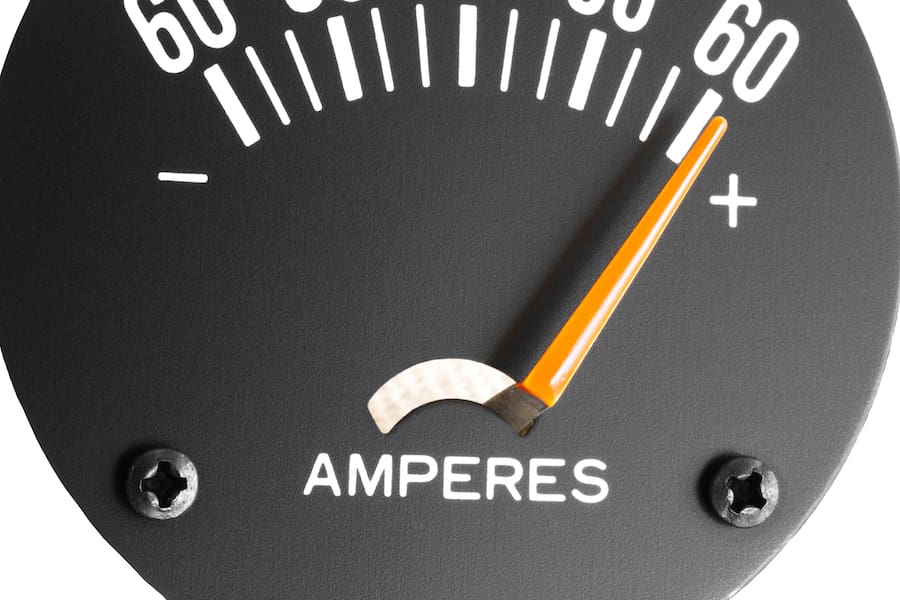
Watts
We already use kW as a way to express power for bikes, and 1kW is 1000 watts (W). Watts refer to power, or work done over time, and since you need often need thousands of them, we tend to use kW to prevent the numbers from getting too unwieldy.
Watts are equal to amps multiplied by volts in an electrical system. On a typical ICE bike’s battery, for instance, you might read specs like 12V, 150A CCA. That means it can put out 12V at 150A (cold cranking amps) for brief periods. Since watts are current multiplied by voltage, our power calculation would be 12 x 150. That’s 1800W, or 1.8kW. Obviously, for a battery to provide enough energy to run a whole bike, it will have to be a lot bigger.

kWh
If you’re going to get lots of performance and range from an electric bike, the battery is going to be key. And the number that will matter most of all is its kWh figure, for kilowatt-hours, as it represents its total capacity.
This is a pretty simple one – a kWh represents how many kilowatts (kW) of power a battery can produce for an hour. Or, to look at it another way, how many hours the battery will be able to continuously produce 1kW of power for.
Confusingly, a lot of batteries (like the ones in our ICE-powered bikes) will tell us their amp-hour (Ah) capacity rather than give a Wh or kWh figure. However, we’ve already seen that watts are amps multiplied by volts, so we can work it out.
A typical lead-acid, 12V bike starter battery might have a 20Ah capacity. That’s 20 x 12, so 240Wh, or 0.24kWh. A car battery, while still 12V, might have 100Ah capacity, giving it 1200Wh or 1.2kWh.
Given that even the smallest, 50cc scooters make around 2.5kW of power, and a superbike might make 150kW, you can see that to get any meaningful range from a battery-powered bike you’ll need rather more capacity than that.

Battery tech
We’re all pretty used to those old lead-acid batteries. They’re heavy, low-powered and they don’t like to be heavily drawn upon for long periods of time. In short, they’re just no good for powering an electric bike.
No, you’ll need something much more energy-dense. In other words, something that contains more potential energy for less size and weight.
One thing to be clear about immediately is that batteries don’t store electricity any more than your bike’s fuel tank stores heat. They contain chemicals that can be converted into electrical power, and when they’re recharged that chemical process is reversed.
Energy density is measured in Wh/kg – watt-hours per kilo. A lead-acid battery manages around 40Wh/kg. Petrol, by comparison, has energy density of around 13,000Wh/kg. So there’s a big chasm to cross.
Fortunately, there are other battery technologies out there. In electric bikes and cars, the favoured tech is lithium-ion, which can have energy density from around 100 to 200Wh/kg. That’s still barely a tenth of what petrol manages, but the calculation isn’t as simple as making a direct comparison.
First, only a small percentage of the potential energy in petrol actually reaches the wheel. Engines are around 20 per cent efficient, cutting the 13kWh/kg headline figure to 2.6kWh/kg, and transmissions might sap another 30 per cent, dropping it to maybe 1.8kWh/kg efficiency at the wheel. That’s still several times what the best batteries can achieve, but it’s much closer.
Another key to electric vehicle tech is the fact that most of them recharge their own batteries during braking – reabsorbing some of the power they’ve spent getting you up to speed in the first place. Although it’s unlikely that we’ll see battery advances that completely bridge the gap to petrol, the improvements that are being made in these efficiencies, allied to ever-improving energy density of the batteries themselves, mean that the gap in performance and range between electric and petrol vehicles is fast being eroded.
In some lab tests, futuristic lithium-air batteries have achieved energy density nearly as good as petrol. Add in the fact that electric motors are more efficient than petrol engines and the fact that electric vehicles can use regenerative braking to recharge, and the scope is there for electric cars or bikes that are both faster and have longer ranges than petrol ones.
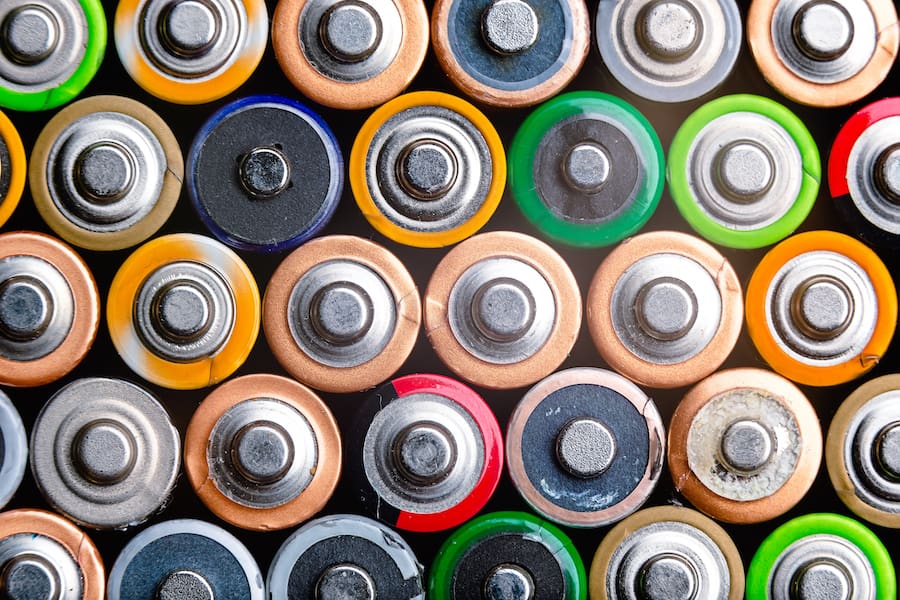
Recharging
Even when batteries can match petrol on performance and range, there’s still the issue of recharging them when they do go flat.
While it takes only moments to refill a petrol tank, batteries take much longer to charge. Looking at Zero’s range, the smallest battery and the fastest charging rate are found on the Zero S, and it takes 1.6 hours to fully recharge. Using a standard charger at home, it’s 4.7 hours, while the most powerful versions with larger batteries can take up to 11 hours.
But this, too, is changing. Car maker Tesla’s latest Supercharger stations can deliver 145kW of power and claim to half fill that car’s massive battery in 20 minutes. The firm reckons it can bring that down to under 10 minutes in the future.
At that rate, stopping to top off a battery’s charge won’t seem such a pain. However, what the world still lacks is a standardised fast charger system to implement in filling stations, which will be vital if we’re going to see a wholesale switch to electric vehicles.
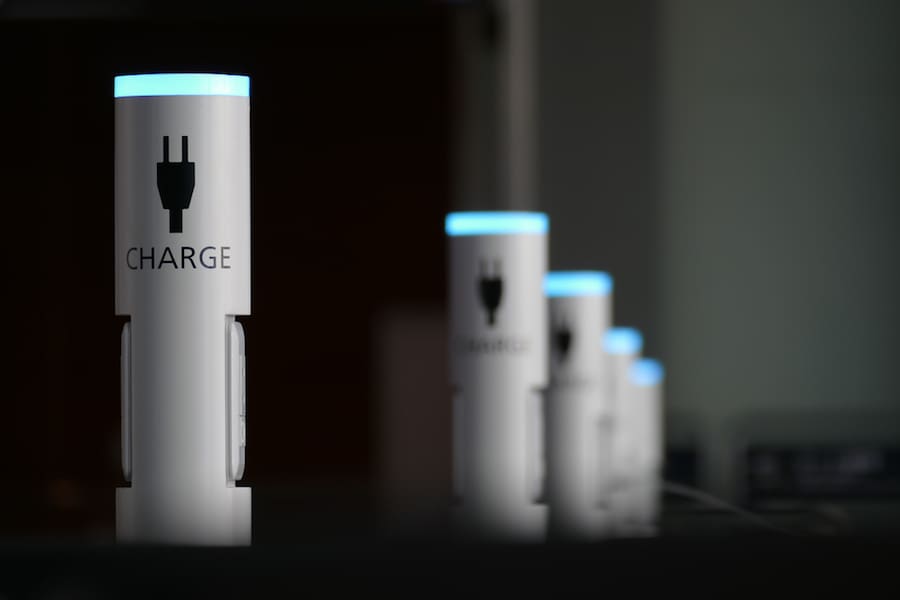
Read More: ENERGICA MOTO-E IN QATAR











